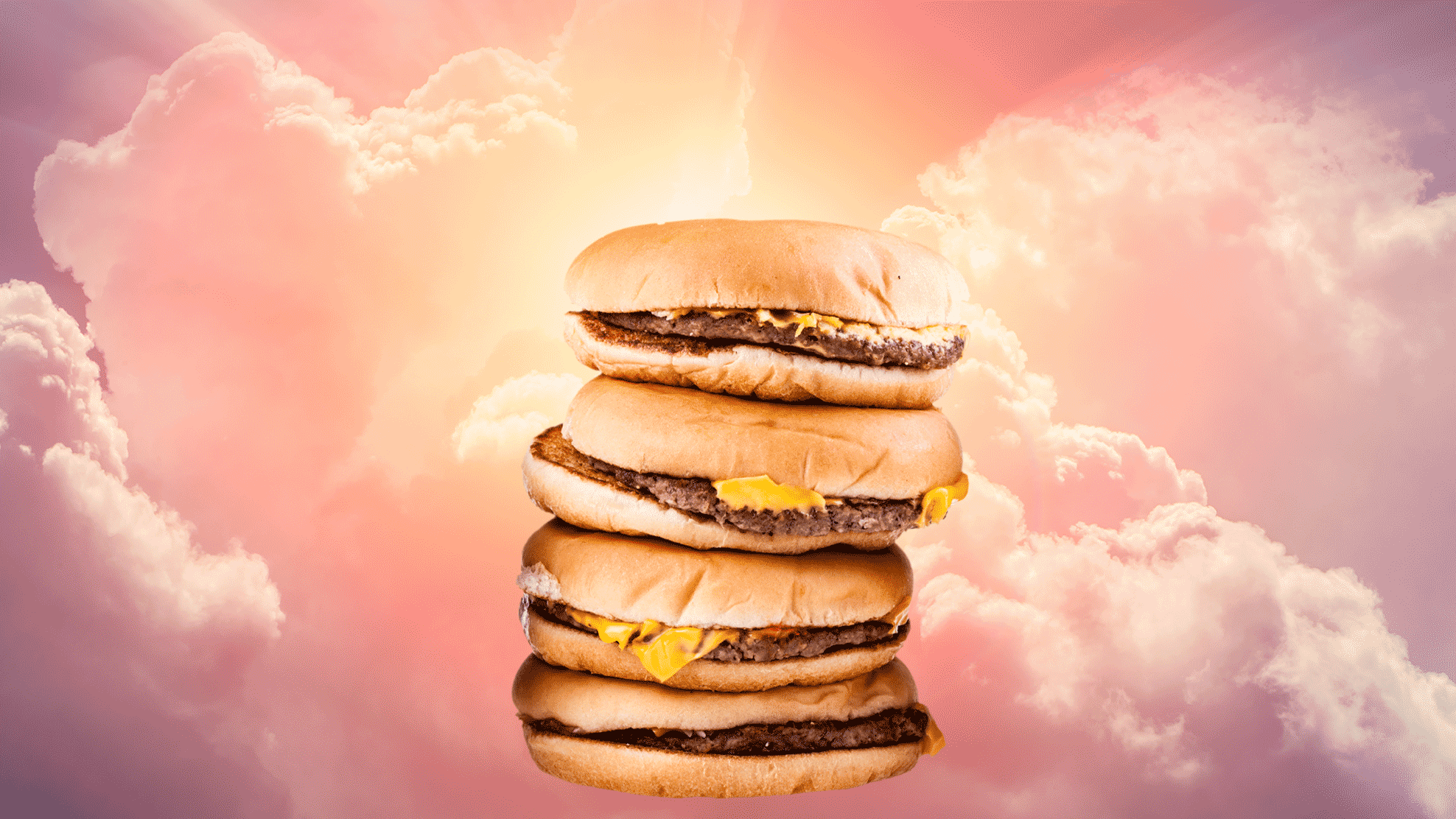The State Of The Plain Fast Food Hamburger
The menu board at my local McDonald's stretches across five vertical television screens, listing out items, price, and caloric level. One dish tucked away in a corner, lost in the sea of Jalapeno McChickens and Double Filet-O-Fishes, is the first item Dick and Mac McDonald sold at their San Bernardino, California restaurant in 1948: the hamburger.
Need I be more specific? The hamburger. The entry-level burger with no frills that costs 15 cents in 1948 and 99 cents today.
To understand the priority McDonald's puts on its original hamburger, look at its placement on McDonald's website: The Big Mac is listed first, followed by the Quarter Pounder with Cheese. The hamburger is last, sitting at the bottom of the page.
At fast food chains, menu items come and go. Sure, there are considerations such as ingredient supply, seasonality, maintaining an efficient menu for back-of-the-house reasons, but mostly dishes come off the menu for a simple reason: If it doesn't sell, it doesn't stay. (Next week, Taco Bell is getting rid of nine items.)
Thinking about this, I wondered about the appeal of the fast food base sandwich, the plain hamburger. With so much more interesting options, who even orders these sandwiches in 2019? But the fact is people do, otherwise it wouldn't remain on the menus of America's top three burger chains. I visited McDonald's, Burger King, and Wendy's over the weekend, ordered their plain hamburger, and ruminated.
I did not expect these to taste very good. For the most part, my instincts were correct.

These were pallid, sad sandwiches. Aesthetically they did not please. The bun-to-meat ratios were all disproportionately bready.
The most notable thing is just how recognizable each plain hamburger tasted of its restaurant. McDonald's burger tastes like a McDonald's burger. There's something in that perfume of subtly peppery beef and minced onions that makes the brain compute Golden Arches. Likewise, the Wendy's hamburger is immediately recognizable by its crisp, square patty. When the two most forward flavors are meat and onion (unfortunately the cook was a bit trigger happy with the ketchup squirter, see above), it makes the Wendy's burger taste a lot like meatloaf.
Most surprising was Burger King's plain hamburger. Not that it was particularly tasty, but the chargrill makes this burger taste precisely like the burger I made in my backyard last weekend. If I were to invite friends over, and if I were feeling particularly lazy and threw some Bubba frozen beef patties onto my Weber grill, the resulting burger would taste exactly like BK's. That's not an indictment on my cooking abilities, it's acknowledgment that the grill taste is the defining trait of a Burger King hamburger. This particular burger isn't delicious, but it's also not unsatisfying.
So what does the plain burger still exist in 2019? I can think of three reasons.
1. Price point. All three chains' base hamburgers cost under $1. We must remember that these restaurants are often a food lifeline for the less well-off. I used to work off Michigan Avenue in downtown Chicago, one of the most prosperous thoroughfares in America. Still, I'd see panhandlers walk into the McDonald's at the Wrigley Building and order three plain hamburgers. A hot meal—750 calories—for $3 and change. The plain hamburger is on the menu as a food of circumstance.
2. Picky eaters. The hamburger is for kids and adults alike, seeking an inoffensive and comfortably plain sandwich. It's not overly salty, dressed simply (ketchup, mustard, pickles are the constants), and comprised mostly of bread. (For the record, picky eating isn't simply a character trait—it's a condition that in 2013 was added to the Diagnostic And Statistical Manual Of Mental Disorders.)
3. Nostalgia. There's something to keeping patient zero of your fast food empire on the menu. My musical tastes lean towards the avant garde with unexpected chord progressions, but sometimes hearing the 12-bar blues is important and satisfying.
The plain hamburger must be, then, the corded landline telephone or AOL dial-up internet of the fast food world. It's taking restaurant bookings in a thick leather-bound book when reservations via an online portal exists. It's not terribly effective in our gilded age, but for a small but persistent group of people, it still does the job, when the job doesn't need to be done any better.
